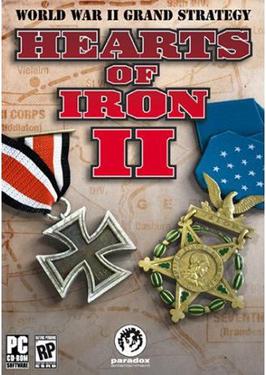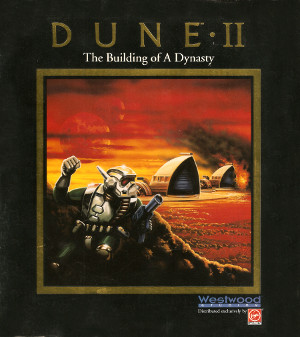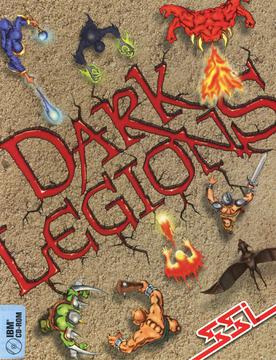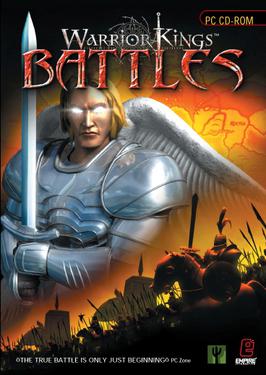
A strategy game or strategic game is a game in which the players' uncoerced, and often autonomous, decision-making skills have a high significance in determining the outcome. Almost all strategy games require internal decision tree-style thinking, and typically very high situational awareness.
Real-time strategy (RTS) is a subgenre of strategy video games that do not progress incrementally in turns, but allow all players to play simultaneously, in "real time". By contrast, in turn-based strategy (TBS) games, players take turns to play. The term "real-time strategy" was coined by Brett Sperry to market Dune II in the early 1990s.

Master of Orion is a turn-based, 4X science fiction strategy game in which the player leads one of ten races to dominate the galaxy through a combination of diplomacy and conquest while developing technology, exploring and colonizing star systems.

Rise of Nations is a real-time strategy video game developed by Big Huge Games and published by Microsoft Game Studios in May 2003. Designed as a fusion of concepts from turn-based strategy games with the real-time strategy genre, the game's development was led by Brian Reynolds, who founded Big Huge Games following his involvement in the development of the turn-based strategy games Civilization II and Sid Meier's Alpha Centauri. In contrast to previous historical real-time strategy games, Rise of Nations is based on the entirety of history, taking place from the ancient era to the modern age, and features eighteen civilizations, playable across eight ages of world history. The game features several innovations on the real-time strategy genre, introducing novel features such as territory and attrition influenced by the turn-based strategy genre.

Medieval: Total War is a turn-based strategy and real-time tactics computer game developed by Creative Assembly and published by Activision. Set in the Middle Ages, it is the second game in the Total War series, following on from the 2000 title Shogun: Total War. Originally announced in August 2001, the game was released in North America on 19 August 2002 and in Europe on 30 August for Microsoft Windows.

Hearts of Iron II is a grand strategy computer war game for Microsoft Windows based upon its predecessor, Hearts of Iron, which was developed by Paradox Development Studio and published by Paradox Interactive.
Battle Masters is a board game by Milton Bradley made in collaboration with Games Workshop in 1992. It is a game that simulates the type of battles as seen in Warhammer Fantasy Battle, but with much simpler game mechanics not based on its parent game. The game, like its sibling Milton Bradley/Games Workshop partnerships HeroQuest and Space Crusade, was designed by Stephen Baker, who later went on to design the popular game Heroscape.

Galactic Civilizations II: Dread Lords is a 4X turn-based strategy by Stardock for Microsoft Windows. It is the sequel to the 2003 game, Galactic Civilizations, and was released at retail and on Stardock's online subscription service, TotalGaming.net, on February 21, 2006. An expansion, Dark Avatar, was released in February 2007. A second expansion, Twilight of the Arnor, was released in April 2008.

Lords of the Realm III is a medieval themed real-time strategy computer game published in March 2004 by Sierra Entertainment, a subsidiary of Vivendi Universal Games. It is the third installment in the Lords of the Realm series, and the last game made by Impressions Games.

Dune II: The Building of a Dynasty is a real-time strategy Dune video game developed by Westwood Studios and released by Virgin Games in December 1992. It is based upon David Lynch's 1984 film Dune, an adaptation of Frank Herbert's science fiction novel of the same name.

War Wind is a science fantasy real-time strategy game developed by DreamForge Intertainment and published by Strategic Simulations, Inc. (SSI). It was released in 1996 for Microsoft Windows and used DirectX 2.0. The game features four unique playable alien races on the fictional planet of Yavaun, each with their own histories, ideologies, and story campaigns consisting of seven scenarios each and an ending unique to that race. The story explores themes of authoritarianism, slavery, revolution, and mysticism. The game also features a map and scenario editor, as well as netplay with up to seven additional players.
Real-time tactics (RTT) is a subgenre of tactical wargames played in real-time simulating the considerations and circumstances of operational warfare and military tactics. It is differentiated from real-time strategy gameplay by the lack of classic resource micromanagement and base or unit building, as well as the greater importance of individual units and a focus on complex battlefield tactics.

Fantasy Empires is a role-playing fantasy wargame for MS-DOS made by Silicon Knights and published by Strategic Simulations in 1993. The game uses the Dungeons & Dragons license, and is set in the fictional world of Mystara.

Warhammer 40,000: Dawn of War – Dark Crusade is the second expansion to the real-time strategy video game Warhammer 40,000: Dawn of War developed by Relic Entertainment and published by THQ. Based on Games Workshop's tabletop wargame, Warhammer 40,000, Dark Crusade was released on October 9, 2006. The expansion features two new races, the Tau Empire and the Necrons. Including the Imperial Guard from Dawn of War's first expansion pack Winter Assault, a total of seven playable races in this expansion.

Dark Legions is a 1994 action strategy game for MS-DOS. It was developed by Silicon Knights and published by Strategic Simulations (SSI).
Strategy is a major video game genre that emphasizes thinking and planning over direct instant action in order to achieve victory. Although many types of video games can contain strategic elements, as a genre, strategy games are most commonly defined as those with a primary focus on high-level strategy, logistics and resource management. They are also usually divided into two main sub-categories: turn-based and real-time, but there are also many strategy cross/sub-genres that feature additional elements such as tactics, diplomacy, economics and exploration.

AV-8B Harrier Assault is a combat flight simulator/realtime strategy game developed by Simis and first published by Domark in 1992. An updated version using SVGA graphics was released later the same year, alternatively known as SVGA Harrier. In 1994, a modified version of the SVGA version was released for the classic Mac OS under the new name Flying Nightmares, which was later ported to 3D0.

Warrior Kings: Battles is a real-time strategy video game developed by British studio Black Cactus and published by Empire Interactive in Europe and co-published with Strategy First in North America. It is a sequel to the 2002 game Warrior Kings and was released March 21, 2003 in Europe and September 30, 2003 in North America.

Valkyria Revolution is a 2017 action role-playing game developed by Media.Vision and published by Sega for the PlayStation 4, PlayStation Vita and Xbox One. It is a spin-off of the Valkyria Chronicles series, set in a different fictional universe. The game received mixed reviews from critics, who praised the game's setting and concept as engaging but criticized the story delivery and large amount of loading screens, calling the gameplay and graphical quality lackluster.















